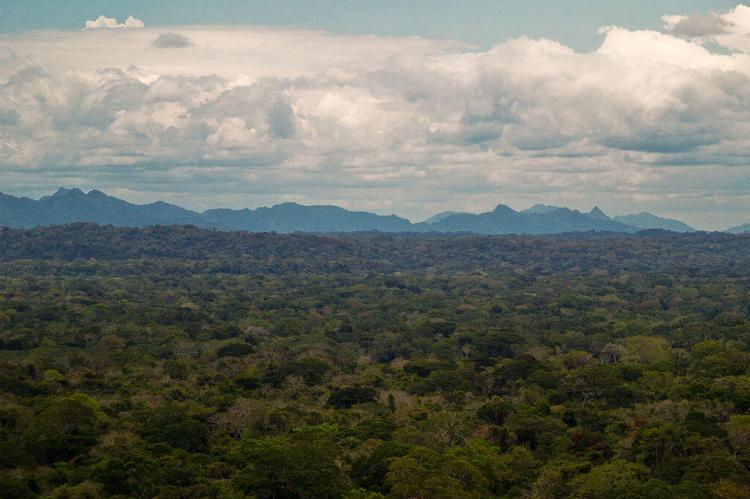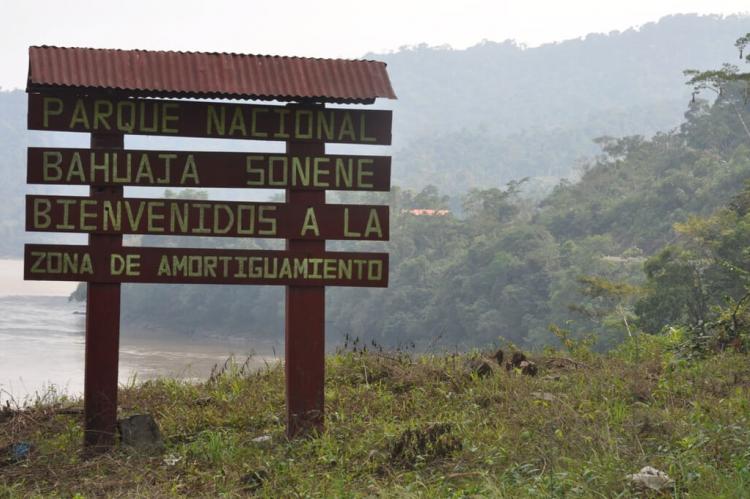Bahuaja-Sonene National Park: A Peruvian Amazon Jewel
Deep within the heart of the Peruvian Amazon, lies the breathtaking Bahuaja-Sonene National Park, a protected area that has captured the imagination of nature lovers and conservationists alike. This vast expanse harbors some of the world's wildest and least-impacted habitats.
Bahuaja-Sonene National Park: A Peruvian Amazon Jewel
Deep within the heart of the Peruvian Amazon, nestled in the departments of Madre de Dios and Puno, lies the breathtaking Bahuaja-Sonene National Park, a protected area that has captured the imagination of nature lovers and conservationists alike. Declared a national park in 1996, this vast expanse of 1,091,416 hectares (2,696,947 acres) harbors some of the world's wildest and least-impacted habitats, a true testament to the region's remarkable biodiversity and ecological significance of the area.
A Tapestry of Landscapes
Diverse Ecosystems
Bahuaja-Sonene National Park is a tapestry of diverse ecosystems, encompassing tropical rainforests, savannas, intermittently flooded grasslands reminiscent of the Pantanal in Brazil, as well as hills and mountains ranging in elevation from 500 meters (1,640 feet) to 2,450 meters (8,038 feet). This extraordinary diversity of habitats supports a rich array of flora and fauna, making the park a true ecological treasure.
River Systems
The meandering courses of several major rivers, including the Heath, the Tambopata, and the Candamo, shape the park's landscapes. These waterways contribute to the region's hydrological cycle and serve as vital corridors for wildlife movement and dispersal.
A Unique Name
Indigenous Origins
The name "Bahuaja-Sonene" holds deep cultural significance. It is derived from the Ese-Eja, an indigenous Amazonian group. "Bahuaja" translates to "Tambopata," while "Sonene" means "Heath," paying homage to the two prominent rivers that define the region's geography.
A Transboundary Conservation Effort
Shared Borders and Collaboration
Bahuaja-Sonene National Park shares borders with the Tambopata National Reserve to the north and the renowned Madidi National Park in Bolivia to the east. This strategic location positions the park as part of a larger chain of protected areas in southern Peru and south-central Bolivia, collectively forming the world's largest multinational tropical protected area.
The Heath River, originating from Lake Titicaca in the Peruvian/Bolivian high Andes, separates the Bahuaja-Sonene and Madidi National Parks. It serves as a natural border between the two countries and highlights the importance of transboundary cooperation in conservation efforts.
Indigenous Heritage
The Ese'eja People
The area of Bahuaja-Sonene National Park holds deep cultural significance as the ancestral land of the Ese'eja indigenous group. For generations, these communities have cultivated manioc (yuca), foraged wild fruits and plants in the forest, and hunted wild animals such as tapirs, deer, and game birds. Today, their descendants reside within the park, serving as stewards of their ancestral homeland and its natural resources.
Biodiversity Riches
Floral Diversity
Bahuaja-Sonene National Park boasts a remarkable diversity of plant life, including species such as Virola sebifera, Cedrela odorata, Spondias mombin, Celtis schippii, Bertholletia excelsa, Ficus insipida, Hevea guianensis, Cedrelinga cateniformis, Iriartea deltoidea, Calycophyllum spruceanum, Guadua weberbaueri, Theobroma cacao, Miconia spp., Annona ambotay, Swietenia macrophylla, Myroxylon balsamum, Astrocaryum murumuru, Enterolobium cyclocarpum, and Mauritia flexuosa, among others.
Avian Wonders
The park's avifauna is equally impressive, with species such as the white-tailed golden throat, the Neotropic cormorant, the blue-and-yellow macaw, the harpy eagle, the white-throated toucan, the horned curassow, the great egret, the scarlet macaw, the bat falcon, the jabiru, and the swallow-tailed hummingbird gracing the skies and forests of Bahuaja-Sonene.
Iconic Fauna
The park's diverse habitats support an array of iconic fauna, including the giant otter, the giant anteater (Myrmecophaga tridactyla), the South American tapir, the marsh deer, the jaguar, the maned wolf, the puma, and the elusive bush dog. These charismatic species are ambassadors for the region's rich biodiversity and the importance of conserving their natural habitats.
Conservation Challenges and Opportunities
While Bahuaja-Sonene National Park represents a significant conservation effort, it also faces potential threats from human activities and environmental pressures. Sustainable management practices, community engagement, and ongoing research are crucial to ensuring the long-term protection of this ecological gem.
Through collaborative efforts with local communities, indigenous groups, and international organizations, Bahuaja-Sonene National Park has the potential to serve as a model for harmonizing conservation and sustainable development, preserving its natural wonders for generations to come.

